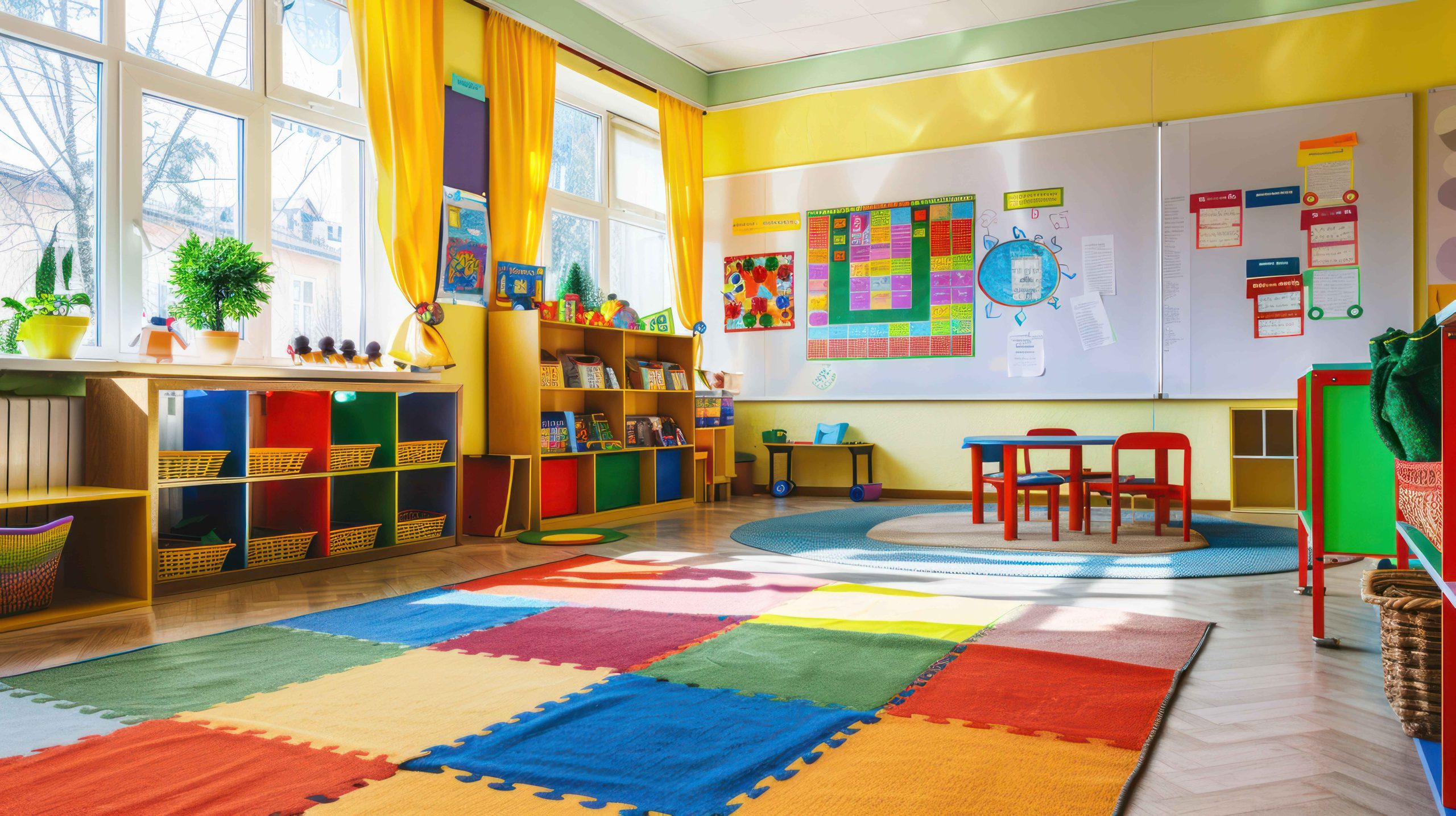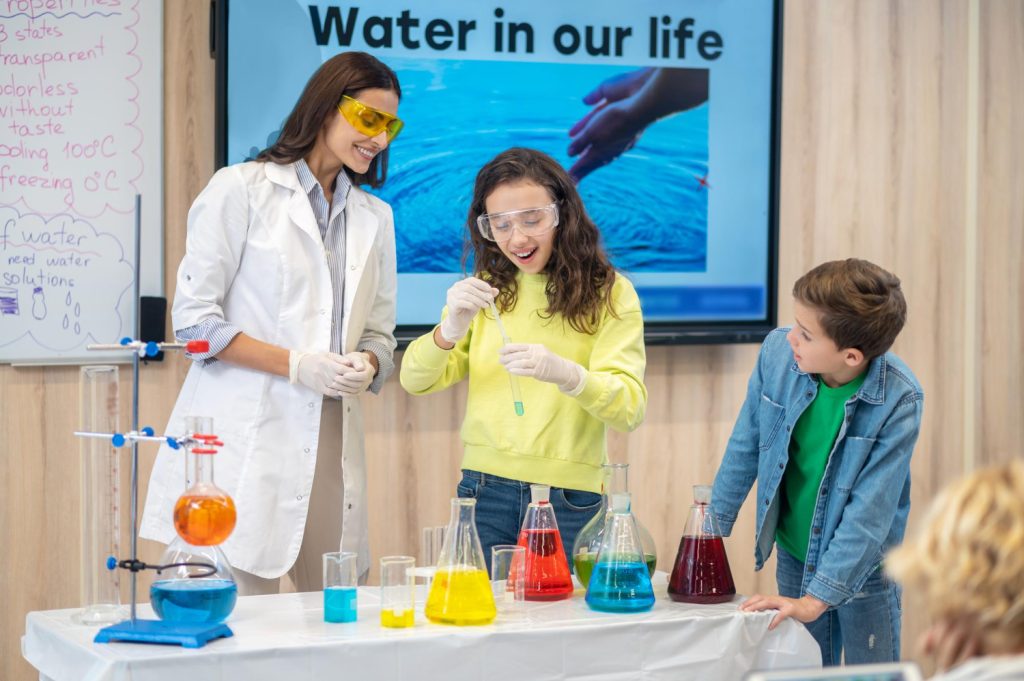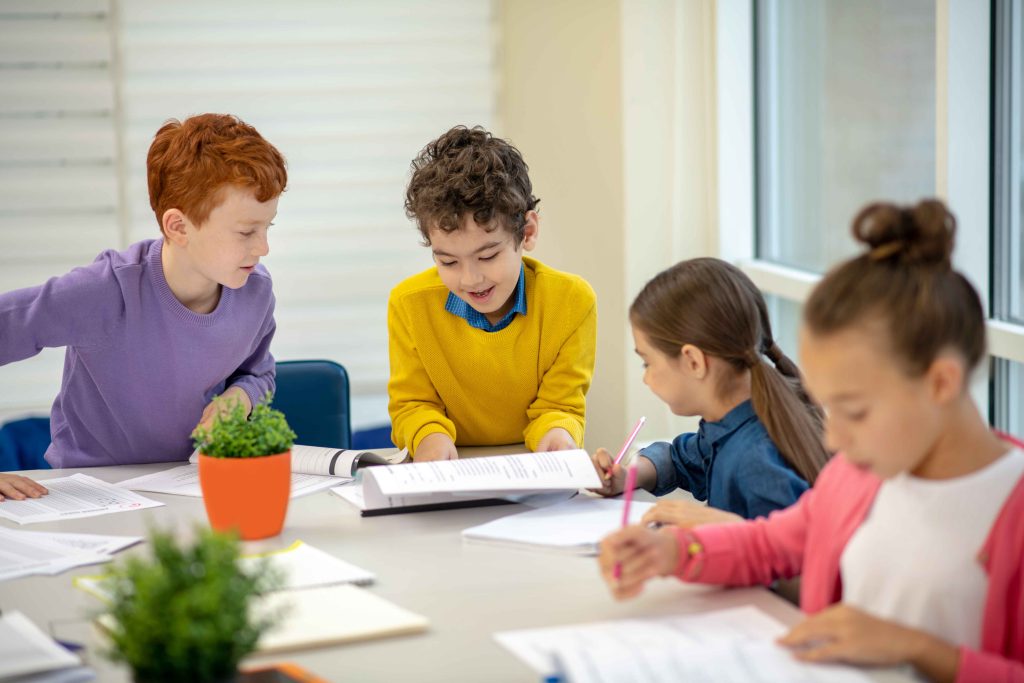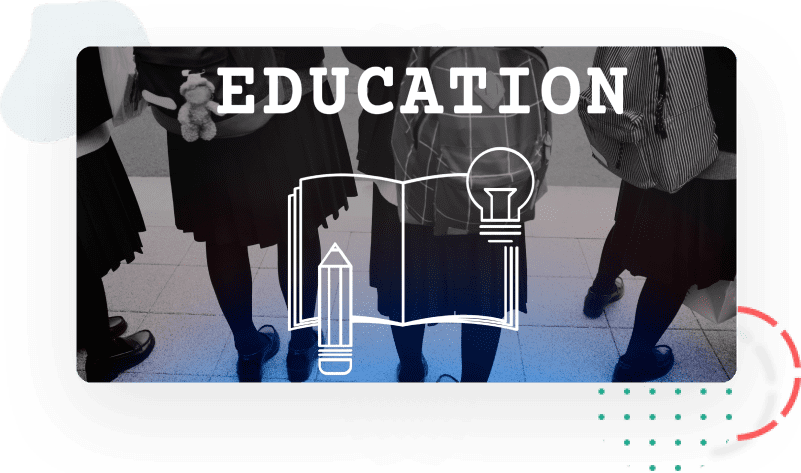Classroom Design Matters More Than You Think!
For young children, the classroom is more than just a space – it’s their first world outside home. It’s a place where they build friendships, develop confidence, and begin a lifelong journey of learning. A thoughtfully designed classroom environment can do wonders to spark curiosity, inspire creativity, and nurture emotional well-being in young learners.
In this blog, we will explore fun classroom ideas for preschool that include how colours, flexible seating, and special learning zones can make early childhood classrooms vibrant, engaging, and effective. We’ll also explore how Hubble Explorers, a next-gen preschool solution, takes this vision even further through its experiential, immersive, and inquiry-based curriculum to preschool classroom setup ideas.
The Psychology of Colour: Painting Brighter Learning Paths

Color is more than decoration – it influences how children feel, focus, and interact.
- Warm hues like red, orange, and yellow stimulate energy and creativity. They work well in active play areas or art corners.
- Cool tones like blue and green have calming effects, ideal for quiet zones like reading nooks.
- Neutral tones help balance energy and reduce sensory overload.
By carefully planning a color palette, educators can create spaces that support different moods and activities – promoting focus, relaxation, or excitement depending on the area’s function.
Pro Tip for Educators: Use color-coding to designate different learning areas – blue for literacy, green for nature and science, red for creativity.
Flexible Seating: Freedom to Choose, Freedom to Learn

Forget rigid rows of desks. The best early childhood classroom designs today are embracing flexible seating in preschool settings – where choice, comfort, and collaboration lead.
These Includes :
- Bean bags and cushions for reading
- Standing desks or floor seating with lap desks
- Wiggle stools for fidget-friendly focus
- Group tables for collaborative projects
Why it works: Flexible seating fosters autonomy, collaboration, and comfort. When children feel physically at ease, they are more emotionally ready to absorb new information.
Designing Special Learning Zones: Spaces with Purpose

Breaking up a classroom into special learning areas allows young learners to experience structure without rigidity. These learning centers in preschool classrooms promote autonomy and deep engagement, give children freedom to explore at their own pace while engaging with varied concepts through hands-on experiences.
Examples of Purposeful Learning Zones:
- Literacy Nook: A cozy corner with books, puppets, and phonics games
- Math & Manipulatives Area: With counting blocks, number puzzles, and sorting bins
- Science and Discovery Zone: Hands-on tools, magnifying glasses, nature kits
- Creative Zone: Art supplies, music instruments, and imaginative play materials
- Calm Corner: A soft, sensory-safe space for emotional regulation and mindfulness
These zones cater to different developmental needs – from gross and fine motor skills to social-emotional learning. They also reflect the Reggio Emilia-inspired principle of “the environment as the third teacher.”
Blending Environment with Pedagogy
In truly impactful classrooms, environment and curriculum go hand in hand. It’s not just about beautiful spaces – it’s about creating intentional experiences that support developmental milestones.
This balance is often seen in early childhood models that embrace experiential learning, guided exploration, and blended teaching strategies. Some preschools today, like those implementing the Astralis – The Illuminated Minds framework, focus on designing learning environments that:
- Nurture emotional intelligence
- Foster inquiry and curiosity
- Encourage creativity and problem-solving
- Support collaboration and global awareness
In such spaces, classrooms are built around themes, child-centric inquiry, and real-life connections, not just academic milestones. It’s a subtle but powerful shift, from teaching content to inviting children into meaningful learning experiences.
Real-World Reflection: What Thoughtful Classrooms Look Like

Imagine a classroom where:
- A child is sitting in a bean bag, flipping through a picture book, mouthing out sounds.
- Another group is gathered around a table, counting colourful blocks and comparing sizes.
- Near the window, a teacher is guiding a small group in planting seeds and journaling observations.
This isn’t a dream; it’s becoming a reality in many progressive preschools across India. The learning environment, shaped by developmental psychology and modern pedagogical insights, acts as an invisible guide gently leading children toward new understandings every day.
Preschool programs like Hubble Explorers thoughtfully integrate these ideas into their curriculum design. Their approach blends age-appropriate resources, experiential activities, and interactive digital tools – all set within carefully planned environments that are developmentally rich and emotionally responsive
The result? Classrooms that feel less like structured lessons and more like a journey of exploration.
Results That Matter
Whether you’re a preschool owner, or a teacher, investing in thoughtful classroom design and a curriculum like Hubble Explorers brings visible benefits:
- Increased child engagement and retention
- Smoother classroom management
- Enhanced school reputation and parent satisfaction
- Confident, happy learners with strong foundational skills
Over 50,000+ children across 15 cities and 7 states are already thriving with Hubble Explorers immersive, inquiry-based model.
Whether you are an aspiring or existing preschool owner looking to elevate your setup? We are here to support you every step of the way. Book your free one-on-one consultation and take the first step toward an impactful preschool journey.
Frequently Asked Questions (FAQs)
1. How to make preschool classrooms more engaging for young learners?
Use bright colours, flexible seating, hands-on materials, and themed learning zones to spark curiosity and active participation.
2. What are the benefits of flexible seating for preschoolers?
It boosts focus, encourages movement, supports diverse learning styles, and promotes independence through choice.
3. What is involved in designing an NEP 2020 aligned preschool classroom?
Incorporate play-based, inquiry-led zones, age-appropriate materials, and learning experiences that align with the Panchkoshas framework and NCF 2022.
4. How do I incorporate flexible seating in early childhood classrooms?
Add options like bean bags, floor cushions, and wobble stools. Let children choose where to sit based on the activity.
5. How does colour psychology impact early childhood education?
Colours influence mood, warm tones energize, cool tones calm. Use colour strategically to support focus and creativity.
6. What is the best classroom layout for kindergarten students?
An open layout with well-defined learning zones, easy movement, and varied seating works best for engagement and flexibility.
7. How should I go about setting up preschool learning zones?
Design separate areas for literacy, math, art, science, and sensory play; each tailored to specific developmental goals.
8. Why is preschool classroom design aligned with NEP 2020 important?
It ensures holistic development, fosters curiosity, and prepares children with skills outlined in India’s latest early education guidelines.




